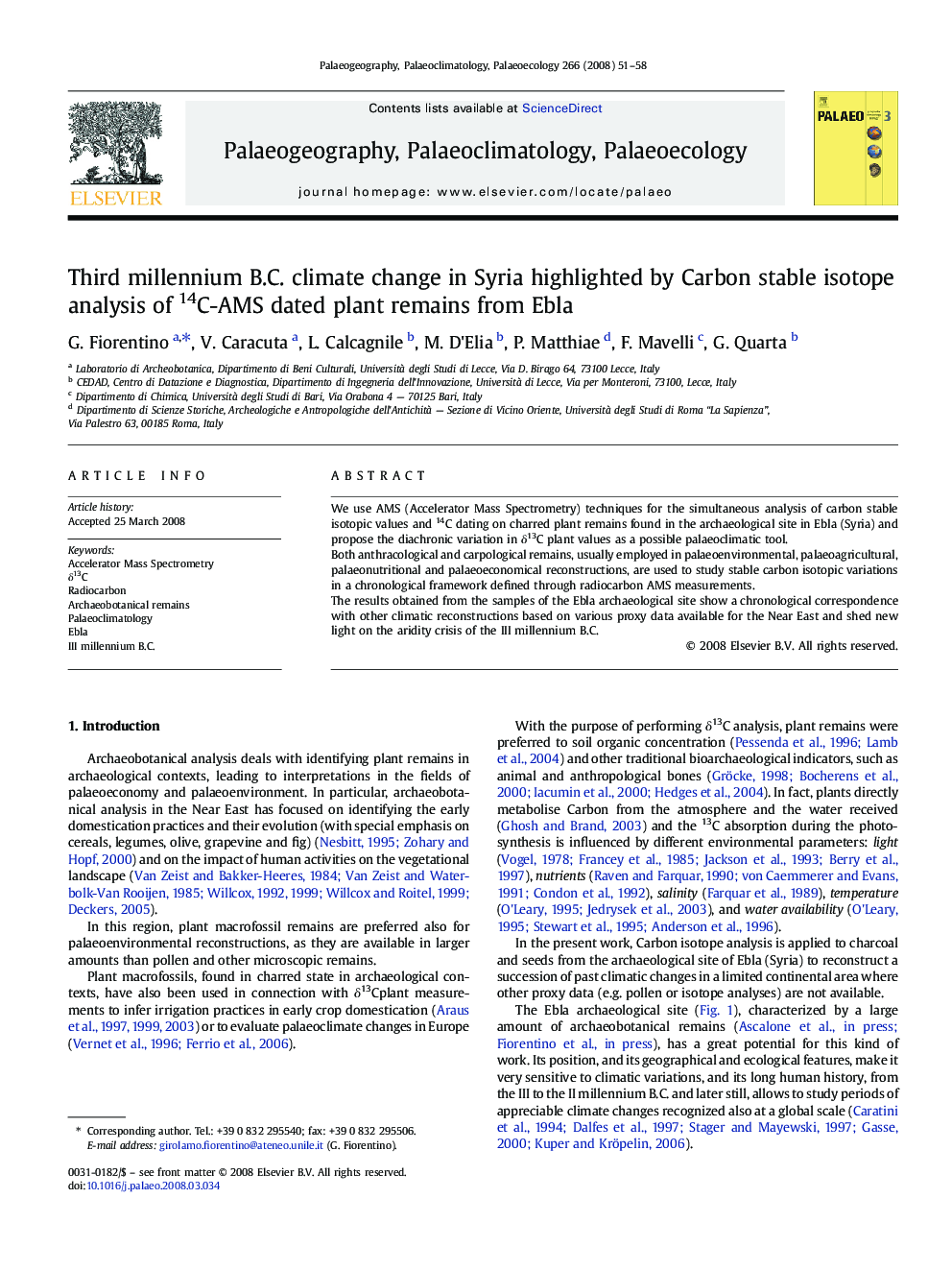| Article ID | Journal | Published Year | Pages | File Type |
|---|---|---|---|---|
| 4468398 | Palaeogeography, Palaeoclimatology, Palaeoecology | 2008 | 8 Pages |
We use AMS (Accelerator Mass Spectrometry) techniques for the simultaneous analysis of carbon stable isotopic values and 14C dating on charred plant remains found in the archaeological site in Ebla (Syria) and propose the diachronic variation in δ13C plant values as a possible palaeoclimatic tool.Both anthracological and carpological remains, usually employed in palaeoenvironmental, palaeoagricultural, palaeonutritional and palaeoeconomical reconstructions, are used to study stable carbon isotopic variations in a chronological framework defined through radiocarbon AMS measurements.The results obtained from the samples of the Ebla archaeological site show a chronological correspondence with other climatic reconstructions based on various proxy data available for the Near East and shed new light on the aridity crisis of the III millennium B.C.
